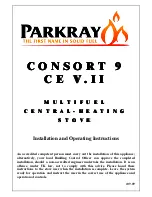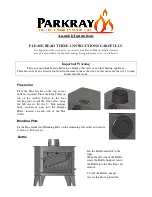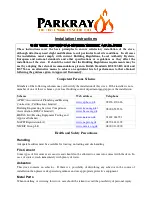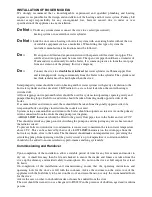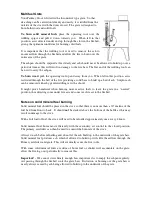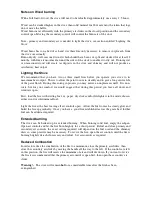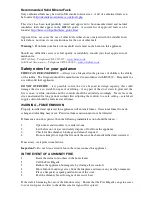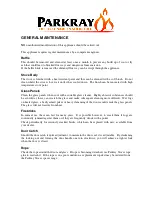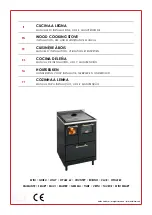
Notes on Wood burning
With a full load of wood, the stove will need to be refuelled approximately once every 1.5 hours.
Wood can be stacked higher in the stove than solid mineral fuel but care must be taken that logs
do not move the baffle.
Wood burns most efficiently with the primary air sliders in the closed position and the secondary
control open. Moving the secondary control will control the burn rate of the stove.
Note - primary and secondary air is needed to light the stove, see section entitled ‘Lighting the
Stove’
Wood burns best on a bed of ash and it is therefore only necessary to remove surplus ash from
the stove occasionally.
Burn only dry, well-seasoned wood, which should have been cut, split and stacked for at least 12
months, with free air movement around the sides of the stack to enable it to dry out. Burning wet
or unseasoned wood will create tar deposits in the stove and chimney and will not produce a
satisfactory heat output.
Lighting the Stove
We recommend that you have two or three small fires before you operate your stove to its
maximum heat output. This is to allow the paint to cure in steadily and to give a long service life
of the paint finish. During this curing in process you may notice an unpleasant smell. It is non-
toxic, but for your comfort we would suggest that during this period you leave all doors and
windows open.
First, load the fire with starting fuel, i.e. paper, dry sticks and/or firelighters in the mode chosen,
either wood or solid mineral fuel.
Light the fire at the base leaving all air controls open. Allow the fuel to reach a steady glow and
build the fire up gradually. Once you have a good fire established across the grate bed, further
fuel can be added as required.
Extended burning
The stove can be banked up for extended burning. When burning solid fuel, empty the ashpan.
Open air controls and let the fire burn brightly for a short period. Refuel and close primary and
secondary air controls, the exact setting required will depend on the fuel used and the chimney
draw so some practice may be necessary. To revive the fire, open the air controls until the fire is
burning brightly de-ash if necessary and refuel. Set air controls as required.
Reduced Combustion
In order to reduce the combustion of the fire to a minimum, close the primary air sliders, then
close the secondary air slider by moving the handle all the way to the left. If the controls are left
in this position, the fire will receive the minimum of air and will die down. If you want to revive
the fire it is recommended that the primary air control is open first, then open the secondary air
slider.
Warning! -
The stove will remain
hot
for a considerable time after the fire has been
extinguished.

